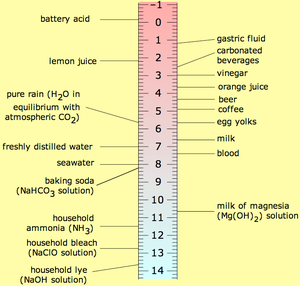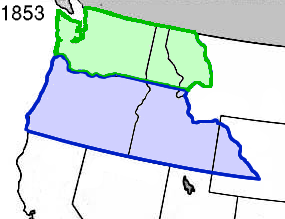 Image via Wikipedia
Image via Wikipedia
Salem is smack dab in the middle of the Willamette Valley and its superb growing conditions for myriad crops and animals. Living here means that, compared to most places, it's easy to enjoy food that is far fresher, tastier, and more nutritious than people can get elsewhere.
One of the best ways to do that is to join in as part of a community-supported agriculture (CSA) venture, such as the one offered by
Minto Island Growers here within the Salem city limits. CSAs are different, because you're not a mere customer -- you're a shareholder, an investor who provides two vital ingredients for a successful small farm: patient capital and an eager market. Unlike a customer who trades cash for produce at the store (often from California, Chile, or even beyond), a CSA shareholder is an integral part of the operation, because you join the CSA and invest your capital up front, assuming some of the risk of the farming operation, while gaining the benefits of abundance and making small, human-scale farming remain possible in these days of very high land costs and excruciatingly tight lending.
In return for your capital investment, you get a regular produce box of whatever is in season, typically once a week in June - October, where your investment is more than repaid with interest with fresh, just-picked fruits and vegetables from right near home. You are still investing, not buying -- if there's bad weather and production is down, you will get a smaller box, and maybe some crops will fail entirely. But, on the other hand, when conditions are good, as they so often are here, you will get way more than the value of your investment share back as ultra-good eating.
CSA share investment opportunities go fast, because many people are learning to recognize a good deal when they see it, despite its slightly unconventional nature. There may be a few shares left in the
Minto Island Growers' CSA -- check with them first. (And check out their newsletters from years past, where you can see the contents of each week's produce box.) But if not, keep looking and asking around--the more of us that want better food, the more people will want to provide it, and together we can restore local, responsibly grown food to our tables.
Another good way to promote good food is to help support the Salem Saturday Market by joining with and volunteering with the
Friends of Salem Saturday Market. It's a fun group of local folks who are intent on polishing our local market, already a gem, into something even finer.
They're looking for more folks to help out, and it's a great way for you to get plugged into the local food scene.
 Image via Wikipedia
Image via Wikipedia
![Reblog this post [with Zemanta]](http://img.zemanta.com/reblog_e.png?x-id=20d1621b-3c30-406c-8106-61a0471f02f2)

 RSS (or Really Simple Syndication) feeds are free content feeds from websites that contain article headlines and summaries and links back to full text articles on the web.
RSS (or Really Simple Syndication) feeds are free content feeds from websites that contain article headlines and summaries and links back to full text articles on the web.![Reblog this post [with Zemanta]](http://img.zemanta.com/reblog_e.png?x-id=029d9348-bcd2-4ff9-b161-b486ae8f8739)





![Reblog this post [with Zemanta]](http://img.zemanta.com/reblog_e.png?x-id=48da08d6-f1be-4533-8e21-88362b55b7de)

![Reblog this post [with Zemanta]](http://img.zemanta.com/reblog_e.png?x-id=155bf46c-a667-4950-84d3-3fe7df77072a)

![Reblog this post [with Zemanta]](http://img.zemanta.com/reblog_e.png?x-id=e802ac49-1c94-4c04-8abb-35e52dccc0ac)

![Reblog this post [with Zemanta]](http://img.zemanta.com/reblog_e.png?x-id=b6640a59-ac1a-4661-a839-6ab04f82c947)



![Reblog this post [with Zemanta]](http://img.zemanta.com/reblog_e.png?x-id=8cec6ef8-0a32-4f7d-9f1d-431f4dd124ee)


![Reblog this post [with Zemanta]](http://img.zemanta.com/reblog_e.png?x-id=bd78577e-fdf2-4449-9dc7-fc7f8a6aee07)

![Reblog this post [with Zemanta]](http://img.zemanta.com/reblog_e.png?x-id=38b595f9-92e3-44e1-be6e-5c26b7e0eef3)

![Reblog this post [with Zemanta]](http://img.zemanta.com/reblog_e.png?x-id=5f865f11-971b-407d-a770-7d4a6e3c66a9)

![Reblog this post [with Zemanta]](http://img.zemanta.com/reblog_e.png?x-id=108affc8-5271-4151-99e9-34f98d37ad0e)

![Reblog this post [with Zemanta]](http://img.zemanta.com/reblog_e.png?x-id=b6d50455-4a62-4092-b510-4aa676f0882e)

![Reblog this post [with Zemanta]](http://img.zemanta.com/reblog_e.png?x-id=3398dd3f-5977-4ce9-9884-91bbe7d9bf93)

![Reblog this post [with Zemanta]](http://img.zemanta.com/reblog_e.png?x-id=dccae11b-08d2-4644-af71-e973702c333c)



